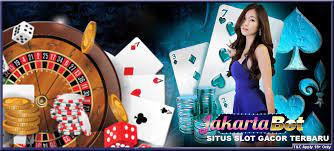Introduction
The Joker card is a unique and versatile card found in many decks of playing cards. Often recognized by its distinctive design and playful imagery, the Joker serves various functions depending on the game being played. In this article, we will explore the paito angka, significance, and role of the Joker card in various card games.
History of the Joker Card
The Joker card has an intriguing history that dates back to the 19th century. It is believed to have originated in the United States during the Civil War era, derived from the game of “Euchre.” The Joker was initially created as a trump card to add excitement and complexity to the game. Over time, its popularity spread, and it began to appear in other card games.
As card decks evolved, the Joker became a standard feature in many decks, typically included alongside the standard 52 cards. Today, most decks contain two Joker cards, which are often designed with whimsical illustrations, featuring jesters or clowns, emphasizing their playful nature.
Meaning and Symbolism
The Joker card symbolizes fun, unpredictability, and chaos. It is often associated with the idea of the trickster—an archetype found in various cultures that represents cleverness, mischief, and the ability to challenge norms. The Joker’s ability to act as a wild card in many games reflects this symbolism, as it can substitute for other cards to create winning combinations.
In broader cultural contexts, the Joker has also been interpreted as a symbol of duality. In tarot, for example, the Fool card, which shares similar characteristics with the Joker, represents new beginnings, spontaneity, and the potential for growth. This duality embodies both the joy and unpredictability of life.
The Joker Card in Games
The role of the Joker card varies significantly across different games:
- Poker: In some variants of poker, such as Wild Card Poker, the Joker can be used as a wild card, allowing players to complete their hands more easily. However, not all poker games utilize the Joker, and its use depends on house rules.
- Rummy: In Rummy games, the Joker often serves as a wild card, enabling players to complete melds and runs more efficiently. Its inclusion can significantly alter the strategies involved in the game.
- Canasta: In Canasta, Jokers are highly valued as they can be used to create melds and can also serve as a substitute for other cards.
- Euchre: The Joker was originally created for Euchre, where it functions as the highest trump card, capable of beating any other card in the game.
- Solitaire: In certain Solitaire variations, Jokers can be utilized as wild cards, allowing players to make strategic moves.
- Board Games: The Joker card has also found its way into various board games, such as Uno, where it can act as a wild card, adding an element of surprise and strategy.
The Joker Card in Popular Culture
The Joker card has transcended the realm of gaming to become an iconic symbol in popular culture. Its representation as the character “Joker” in comic books, movies, and television shows has further solidified its place in society. The Joker character, particularly in the Batman franchise, embodies chaos, humor, and complexity, reflecting the dual nature of the card itself.
Conclusion
The Joker card is more than just a whimsical addition to a deck of cards; it represents a rich history and a unique role in various games. Its ability to act as a wild card brings an element of surprise and excitement, while its symbolism reflects deeper themes of unpredictability and duality. Whether used in traditional card games or embraced in popular culture, the Joker continues to be a fascinating and multifaceted symbol in the world of gaming and beyond.
